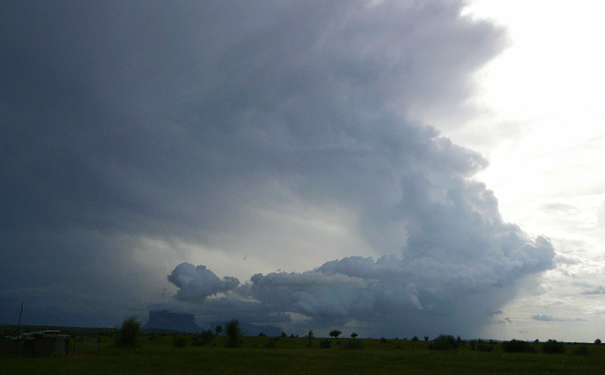
A storm is brewing in Mali, presumably over dry soils. Image: F. Guichard & L. Kergoat, AMMA project, CNRS copyright
The forecast is sunny, but there’s a slight chance of chaos.
Meteorologists seem to be the subjects of ridicule from time to time — if we can land a rover on Mars, why can’t we forecast the weather? To be fair, they’re getting better, but they still have to rely on the weather obeying the rules we’ve set out instead of being subject to the chaos theory.
There are a lot of factors out there that could cause changes to the weather. Edward Lorenz (1917-2008), the father of chaos theory, described these tiny changes as the Butterfly Effect in the 1960s — if a butterfly flaps its wings, it could cause a storm somewhere, hundreds or thousands of kilometres away.
Some of these, such as the rotation of our planet or the Sun heating the Earth’s surface, have already been accounted for. But this week a new variable emerged, when an international research team announced that afternoon storms are more likely to develop when the soil is dry.
Rain clouds in Africa tended to brew up in places where it hadn’t rained recently, says Dr Chris Taylor from the Centre for Ecology & Hydrology in the UK, who led the study published in Nature. However, when he and his team looked at satellite images of storms across the globe and matched these with how wet the ground was, they were puzzled by the results.
“We were surprised to see a similar pattern occurring in other regions of the world such as the US and continental Europe. In those less extreme climates, with more vegetation cover, we expected the soil wetness effect would be too weak to identify.”
The weather models depend on the rules we’ve programmed them with, but it seems that in this case existing climate models suggest that rainfall occurs over wetter soil. The researchers found that on sunny days the land heats the air, creating thermals that reach several kilometres up into the atmosphere. And if the soil is dry, the thermals are stronger, making the chance of rain more likely.
Now the meteorologists have to add another factor into their calculations — another complication, if you will. They are getting better at making predictions about storms and other types of weather, but thanks to the Chaos Theory, they will never be able to do so with absolute certainty.
Don’t forget your umbrella.
Source: Centre for Ecology & Hydrology






